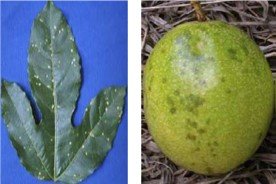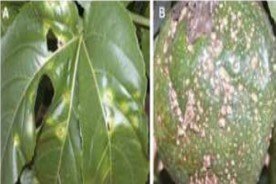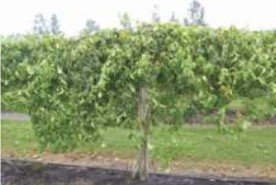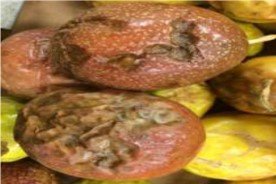Schedule
Passion Fruit Crop Schedule
| Product Name | Fertilizers | |||||
|---|---|---|---|---|---|---|
| Poornima kit | NPK Grow Caps |
Humigrow Nano Powder |
ALP | Sonha-Bihan | ||
| Humic Acid | Chelated Multi-micronutrient |
PGP/PGR | ||||
| Land Reparation | Month | |||||
| Soil Treatment | Month | |||||
| Vegetative Growth | Month 1 | 1 Kit | ||||
| Month 2 | ||||||
| Month 3 | 2 Caps | 120gm | ||||
| Month 4 | ||||||
| Month 5 | 1 Kit | |||||
| Month 6 | ||||||
| Month 7 | 2 Caps | 120gm | ||||
| Month 8 | ||||||
| Month 9 | 1 Kit | |||||
| Month 10 | ||||||
| Month 11 | 2 Caps | 120gm | ||||
| Month 12 | ||||||
| Flowering | 250gm | 250gm | ||||
| Fruiting | 500gm | 500gm | ||||
| Pruning | ||||||
| Total Quantity | 3 Kit | 6 Caps | 360gm | 750gm | 250gm | |
| Broadcast | |
| Top Dressing | |
| Basal Dressing | |
| Soil Application | |
| Spray | |
| * | Optional |
NOTE: For the first year donot immidietaly substitute 100% chemical fertilizer with the SIESTO GREEN products, as the soil is used to chemical fertilizer, it may affect the output. So the best way to substitute is by reducing 50% of chemical input in the first year, 25% the following 2nd year, & then another 10% by the 3rd year. After the 3rd year use synthetic fertilizer / inorganic fertilizer if their is a requirement depending on the soil health.
CROP SCHEDULE FOR CABBAGE
Sr. No.Treatment / ApplicationProductDose /AcreAPPLICATIONManagement1Vegetative – Dissolve in 20 to 200 ltr. of water as required for 1 acre of land and apply through Drip Irrigation or drench.POORNIMA KIT1 KITApply it in 1st, 5th & 9th month.It is a balanced form of nutrients that includes NPK, Zinc, Cropforce NP, Humigrow NP, and Mycorrhiza NP2Vegetative – Mix all with the required amount of water and apply through drip irrigation, flood irrigation, or drenching as per farmer’s availability.NPK + Humigrow2 Caps + 120gmApply it in 3rd, 7th & 11th month.It is a balanced form of Nutrition that includes NPK.3Flowering – Mix both in 20 – 200 liters of water as per requirement and apply it in a soil.ALP + Sonhabihan250gm + 250gmSpray it during flowering period.It is a Micronutrient and PGP that helps in Growth, Fruit set, and the quality of the produce.4Fruiting – Mix both in 20 – 200 liters of water as per requirement and apply it in a soil.ALP + Sonhabihan500gm + 500gmApply it during fruiting stage.It is a Micronutrient and PGP that helps in Growth, Fruit set, and the quality of the produce.
NOTE: For any kind of Deficiency, Pest attacks, or Fungal or Bacterial diseases use the products as suggested.
PEST ATTACKS, BACTERIAL, OR FUNGAL MANAGEMENT
PEST / BACTERIAL / FUNGALIDENTIFICATION IN CROPSYMPTOMSSUGGESTED PRODUCTBrown spot Spores can form a black thin mass covering the middle of the lesion, being more abundant on the abaxial surface. Abscission of the affected leaves occurs rapidly causing intense defoliation.IndofaSeptoria Spot
Spores can form a black thin mass covering the middle of the lesion, being more abundant on the abaxial surface. Abscission of the affected leaves occurs rapidly causing intense defoliation.IndofaSeptoria Spot Leaves are the most affected organs, showing light brown slightly round necrotic spots normally encircled by a chlorotic halo.IndofaScab
Leaves are the most affected organs, showing light brown slightly round necrotic spots normally encircled by a chlorotic halo.IndofaScab Infected plants show small round spots on the leaves. Spots are initially translucent, and later become necrotic showing greenish-grey centers that correspond to fungal fructification.Bacillus Subtilis + BacillusFusarium Wilt
Infected plants show small round spots on the leaves. Spots are initially translucent, and later become necrotic showing greenish-grey centers that correspond to fungal fructification.Bacillus Subtilis + BacillusFusarium Wilt The glossy green leaves of young passion fruit plants show a pale green color and mild dieback. A drop of lower leaves, general plant wilting, and sudden death take place as the disease progresses.Indofa + Bacillus + LifelineRoot & Crown Rot
The glossy green leaves of young passion fruit plants show a pale green color and mild dieback. A drop of lower leaves, general plant wilting, and sudden death take place as the disease progresses.Indofa + Bacillus + LifelineRoot & Crown Rot Phytophthora root and crown rot disease affect both adults as well as nursery plants. Mild chlorosis is followed by wilting, defoliation, and death. Cortical tissues of the plants are exposed.Indofa + BacillusAnthracnose
Phytophthora root and crown rot disease affect both adults as well as nursery plants. Mild chlorosis is followed by wilting, defoliation, and death. Cortical tissues of the plants are exposed.Indofa + BacillusAnthracnose Spots, initially 2-3 mm in diameter and oily in appearance, are produced on the leaf. They become dark brown, round, or irregularly shaped and 1 cm in diameter. The centers of spots become brittle and may break apart.Indofa + BacillusMites
Spots, initially 2-3 mm in diameter and oily in appearance, are produced on the leaf. They become dark brown, round, or irregularly shaped and 1 cm in diameter. The centers of spots become brittle and may break apart.Indofa + BacillusMites Mites are scattered in reddish patches on the surface of the fruit, particularly around the stem end, along the midrib, and veins of the leaf, especially on the under-surface.Lifeline + Traps + Meta + BTFruit Fly
Mites are scattered in reddish patches on the surface of the fruit, particularly around the stem end, along the midrib, and veins of the leaf, especially on the under-surface.Lifeline + Traps + Meta + BTFruit Fly The larvae damage the fruit by feeding on its pulp, contaminating it with bacteria and fungi, and causing premature fruit drop. The oriental, melon and Mediterranean fruit flies puncture the fruit while the rind is still tender.Traps + MetaMealybugs
The larvae damage the fruit by feeding on its pulp, contaminating it with bacteria and fungi, and causing premature fruit drop. The oriental, melon and Mediterranean fruit flies puncture the fruit while the rind is still tender.Traps + MetaMealybugs If a severe infestation occurs, loss of vigor, leaf drop, and fruit malformation may occur. Unchecked, an infestation may cause the death of the plant.Traps + MetaAphid
If a severe infestation occurs, loss of vigor, leaf drop, and fruit malformation may occur. Unchecked, an infestation may cause the death of the plant.Traps + MetaAphid Aphids cause malformation in foliage, and they are more important as disease vectors. Myzus persicae and A. gossypii transmit viral disease that causes the hardening of fruits. Myzus persicae and M. solanifolii are vectors of the passion fruit woodiness virus.Lifeline + traps + Meta + BT
Aphids cause malformation in foliage, and they are more important as disease vectors. Myzus persicae and A. gossypii transmit viral disease that causes the hardening of fruits. Myzus persicae and M. solanifolii are vectors of the passion fruit woodiness virus.Lifeline + traps + Meta + BT
 Spores can form a black thin mass covering the middle of the lesion, being more abundant on the abaxial surface. Abscission of the affected leaves occurs rapidly causing intense defoliation.IndofaSeptoria Spot
Spores can form a black thin mass covering the middle of the lesion, being more abundant on the abaxial surface. Abscission of the affected leaves occurs rapidly causing intense defoliation.IndofaSeptoria Spot Leaves are the most affected organs, showing light brown slightly round necrotic spots normally encircled by a chlorotic halo.IndofaScab
Leaves are the most affected organs, showing light brown slightly round necrotic spots normally encircled by a chlorotic halo.IndofaScab Infected plants show small round spots on the leaves. Spots are initially translucent, and later become necrotic showing greenish-grey centers that correspond to fungal fructification.Bacillus Subtilis + BacillusFusarium Wilt
Infected plants show small round spots on the leaves. Spots are initially translucent, and later become necrotic showing greenish-grey centers that correspond to fungal fructification.Bacillus Subtilis + BacillusFusarium Wilt The glossy green leaves of young passion fruit plants show a pale green color and mild dieback. A drop of lower leaves, general plant wilting, and sudden death take place as the disease progresses.Indofa + Bacillus + LifelineRoot & Crown Rot
The glossy green leaves of young passion fruit plants show a pale green color and mild dieback. A drop of lower leaves, general plant wilting, and sudden death take place as the disease progresses.Indofa + Bacillus + LifelineRoot & Crown Rot Phytophthora root and crown rot disease affect both adults as well as nursery plants. Mild chlorosis is followed by wilting, defoliation, and death. Cortical tissues of the plants are exposed.Indofa + BacillusAnthracnose
Phytophthora root and crown rot disease affect both adults as well as nursery plants. Mild chlorosis is followed by wilting, defoliation, and death. Cortical tissues of the plants are exposed.Indofa + BacillusAnthracnose Spots, initially 2-3 mm in diameter and oily in appearance, are produced on the leaf. They become dark brown, round, or irregularly shaped and 1 cm in diameter. The centers of spots become brittle and may break apart.Indofa + BacillusMites
Spots, initially 2-3 mm in diameter and oily in appearance, are produced on the leaf. They become dark brown, round, or irregularly shaped and 1 cm in diameter. The centers of spots become brittle and may break apart.Indofa + BacillusMites Mites are scattered in reddish patches on the surface of the fruit, particularly around the stem end, along the midrib, and veins of the leaf, especially on the under-surface.Lifeline + Traps + Meta + BTFruit Fly
Mites are scattered in reddish patches on the surface of the fruit, particularly around the stem end, along the midrib, and veins of the leaf, especially on the under-surface.Lifeline + Traps + Meta + BTFruit Fly The larvae damage the fruit by feeding on its pulp, contaminating it with bacteria and fungi, and causing premature fruit drop. The oriental, melon and Mediterranean fruit flies puncture the fruit while the rind is still tender.Traps + MetaMealybugs
The larvae damage the fruit by feeding on its pulp, contaminating it with bacteria and fungi, and causing premature fruit drop. The oriental, melon and Mediterranean fruit flies puncture the fruit while the rind is still tender.Traps + MetaMealybugs If a severe infestation occurs, loss of vigor, leaf drop, and fruit malformation may occur. Unchecked, an infestation may cause the death of the plant.Traps + MetaAphid
If a severe infestation occurs, loss of vigor, leaf drop, and fruit malformation may occur. Unchecked, an infestation may cause the death of the plant.Traps + MetaAphid Aphids cause malformation in foliage, and they are more important as disease vectors. Myzus persicae and A. gossypii transmit viral disease that causes the hardening of fruits. Myzus persicae and M. solanifolii are vectors of the passion fruit woodiness virus.Lifeline + traps + Meta + BT
Aphids cause malformation in foliage, and they are more important as disease vectors. Myzus persicae and A. gossypii transmit viral disease that causes the hardening of fruits. Myzus persicae and M. solanifolii are vectors of the passion fruit woodiness virus.Lifeline + traps + Meta + BT
PRECAUTIONS: -
Biofertilizer is not a chemical fertilizer hence do not mix with agrochemicals.Do not expose to direct sunlight or heat.Use Bio-fertilizer before or after 3-4 days of use of chemical fertilizer.Please, clean the sprayer before the use of Bio-fertilizer or bio-pesticide.
NOTE:
Recommended dosage on this crop schedule can vary depending on soil health, environmental conditions, and pest attacks.Add available forms of Phosphorus and Potash depending on the crop and crop varieties before every Transplantation.Add available forms of calcium and magnesium as per the requirement.1-acre POORNIMA KIT contains: -NPK caps = 2 capsZinc caps = 1 capCropforce Nano Powder = 120gmHumigrow Nano Powder = 120 gmMycorrhiza nano powder = 100 gm

